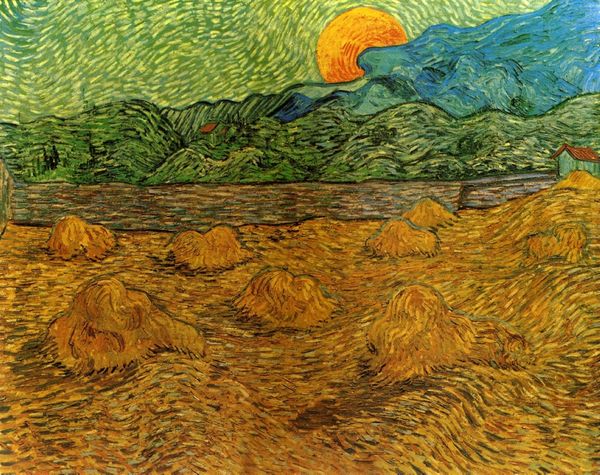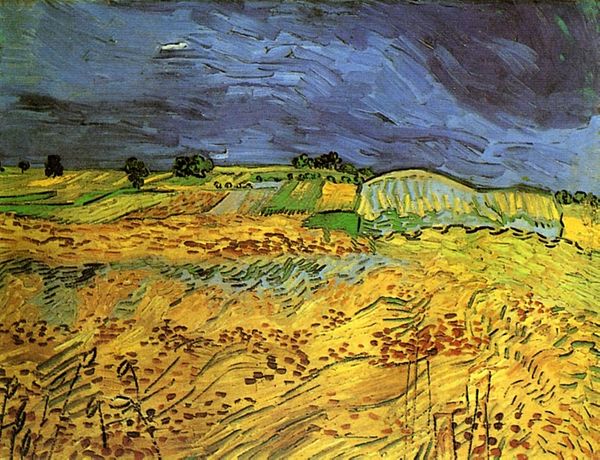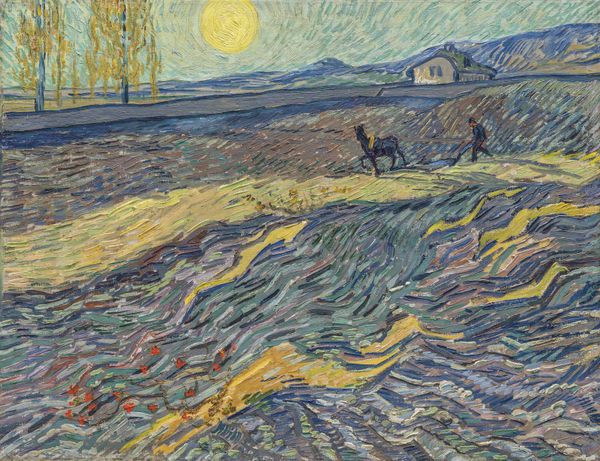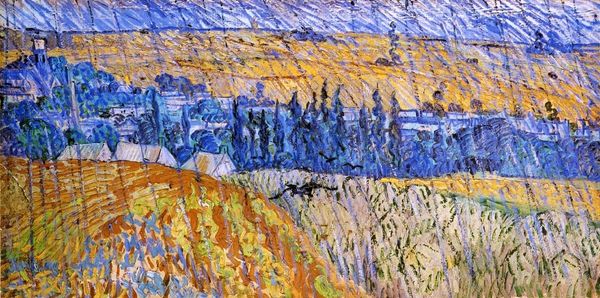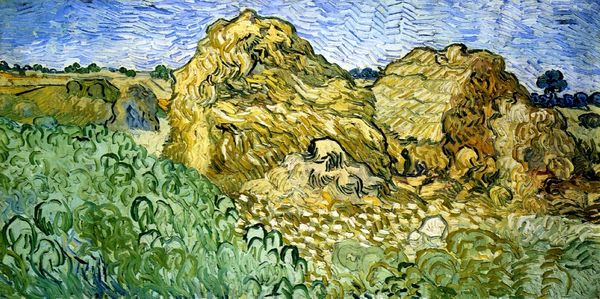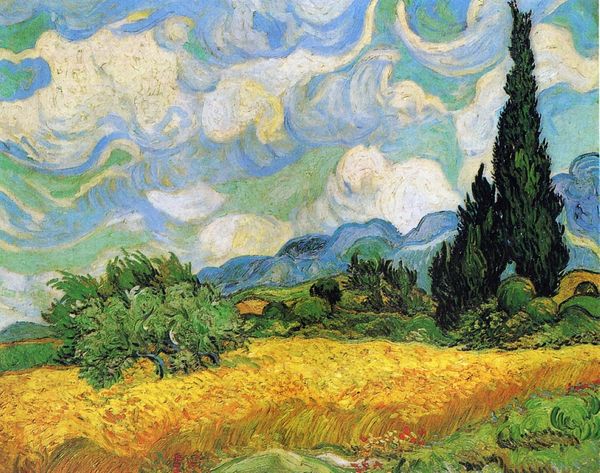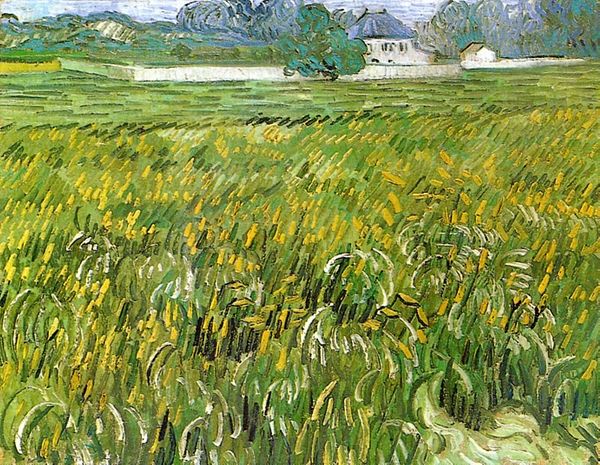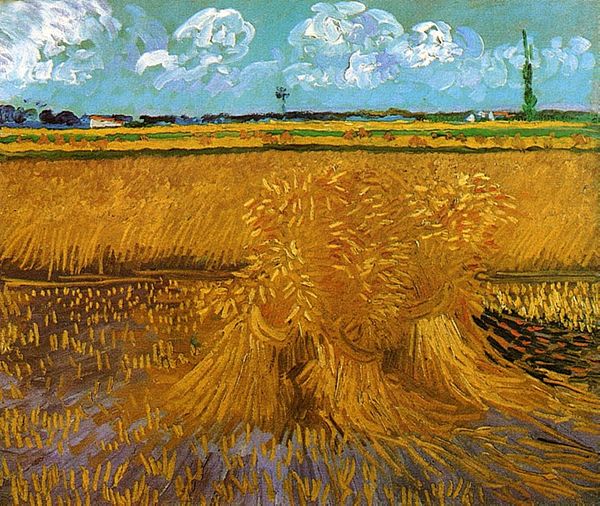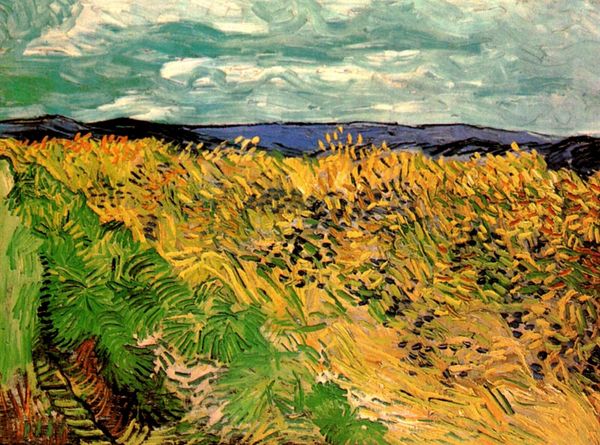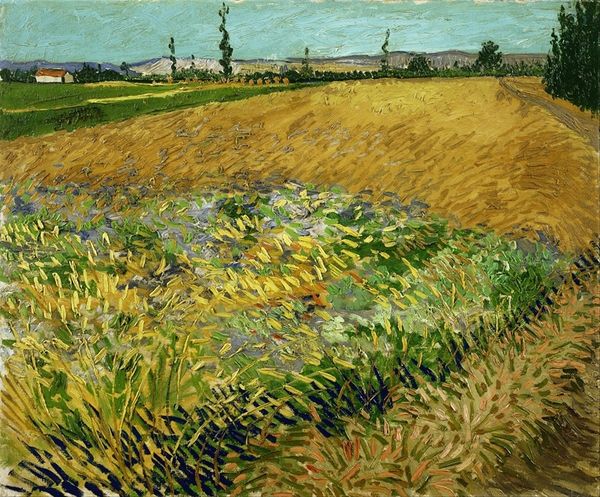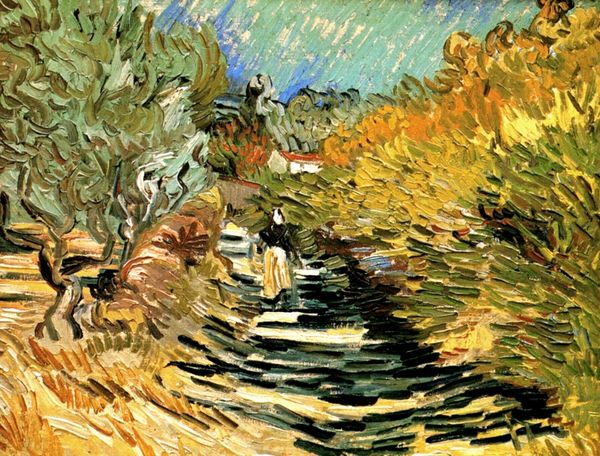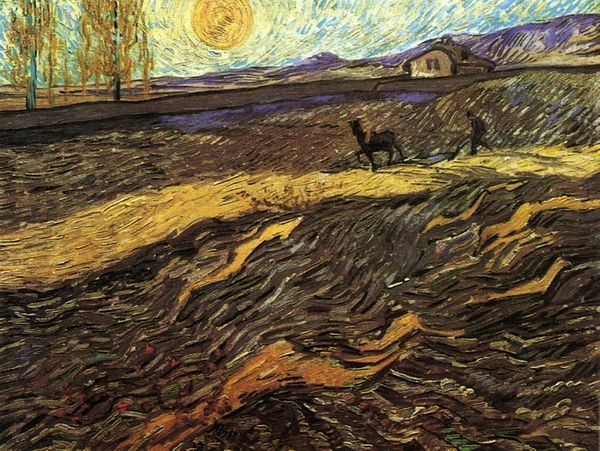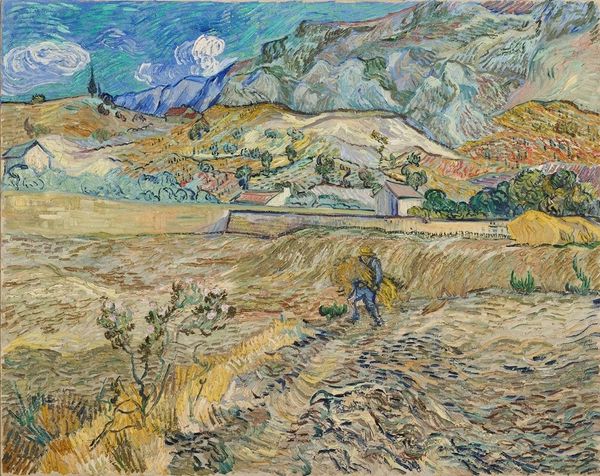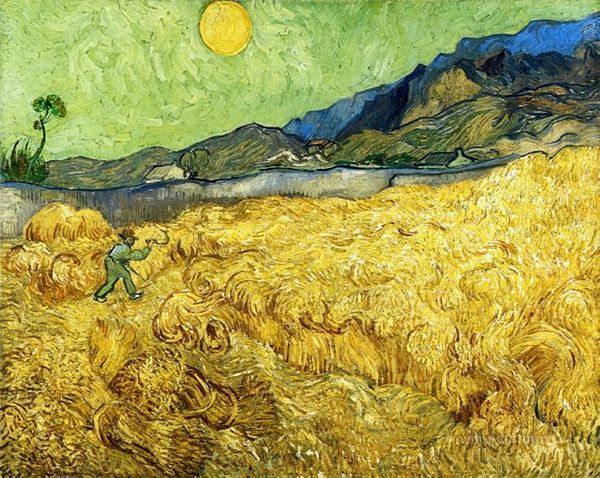
painting, plein-air, oil-paint
#
painting
#
plein-air
#
oil-paint
#
landscape
#
expressionism
#
post-impressionism
#
expressionist
Dimensions: 43 x 50 cm
Copyright: Public domain
Curator: Right now, we’re looking at Van Gogh’s "Wheat Fields with Auvers in the Background," painted in 1890, a piece held in a private collection. Editor: Whoa, it feels like I'm staring into the sun, but a warm, hay-fever kind of sun. The texture practically vibrates. I can feel the heat radiating off those golden brushstrokes! Curator: Absolutely. The thick impasto is classic Van Gogh; layers and layers of oil paint worked in a very expressive manner. He really captured the material reality of this field, of agriculture as labor. The means by which people secure nourishment is rendered very explicitly with this visible technique. Editor: Yeah, and it makes me wonder about his state of mind at the time. It’s both beautiful and… intense. I see that church on the horizon like a sort of last beacon of hope, or something. Curator: Some scholars have considered works like this done late in his life to mirror his own psychological states. The material of wheat itself speaks to larger agricultural and economic systems. Fields are for harvest and production, so viewing this vista through such expressionistic mark-making tells us perhaps what he extracted and how he translated that. Editor: So, you are talking about this wheat, a kind of a cash crop that made a fortune for many people back in the time! All I see is the way he painted. That sky seems almost oppressive, like the field is struggling to breathe under its weight. There’s a village, hinting at daily life, but all I can feel is this surge of energy, like nature’s about to burst! Curator: And considering this was painted near the end of his life, not far removed from periods of great personal strife, that oppressive sky perhaps reflects a society whose material processes could not ultimately sustain or find a place for him as a worker in its midst. Editor: True, it makes you question: did this landscape offer solace, or was it just another mirror reflecting the turmoil within? Curator: I’m not sure he drew as clean a division between interior and exterior states as you’ve been doing here! Editor: Either way, that field holds a lot more than just wheat, doesn’t it? It holds stories, emotions, a life poured onto canvas. Curator: Indeed, a reflection on labor, landscape and his artistic project.
Comments
No comments
Be the first to comment and join the conversation on the ultimate creative platform.
